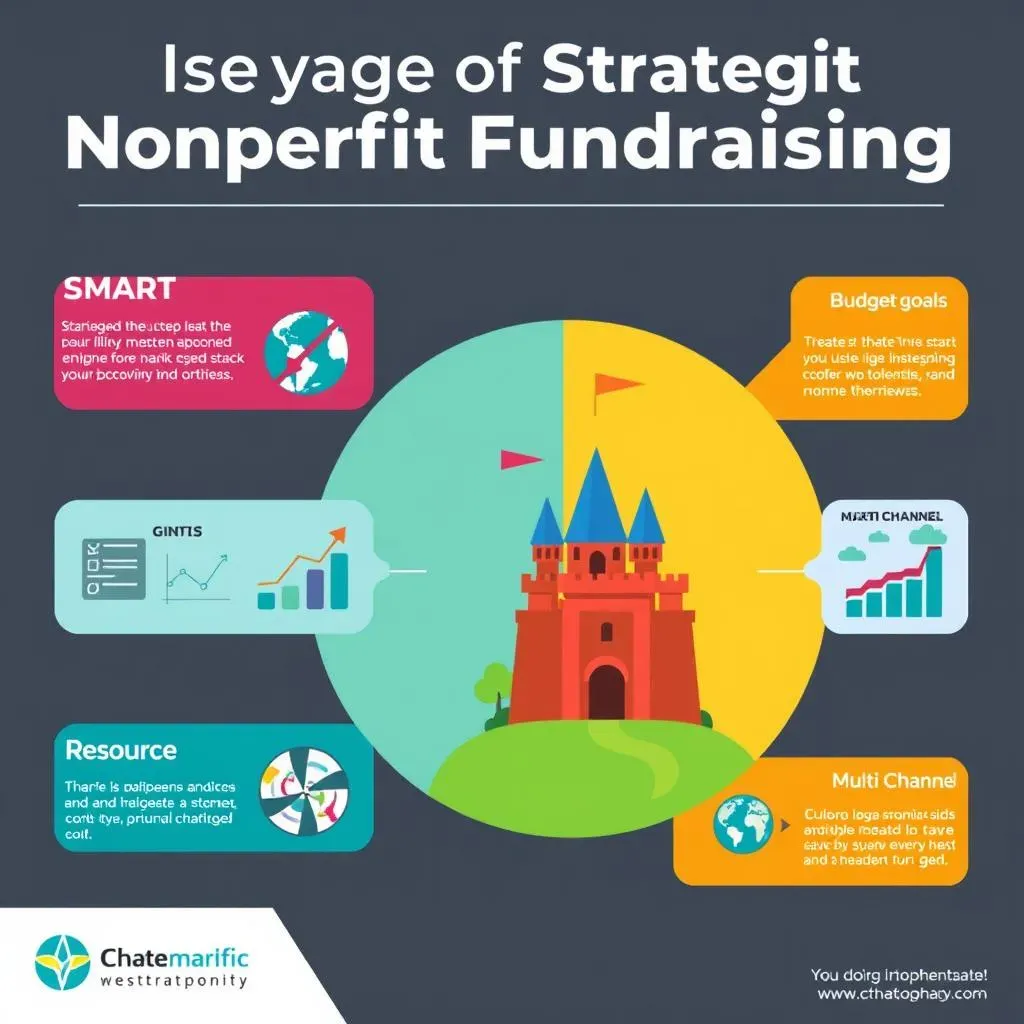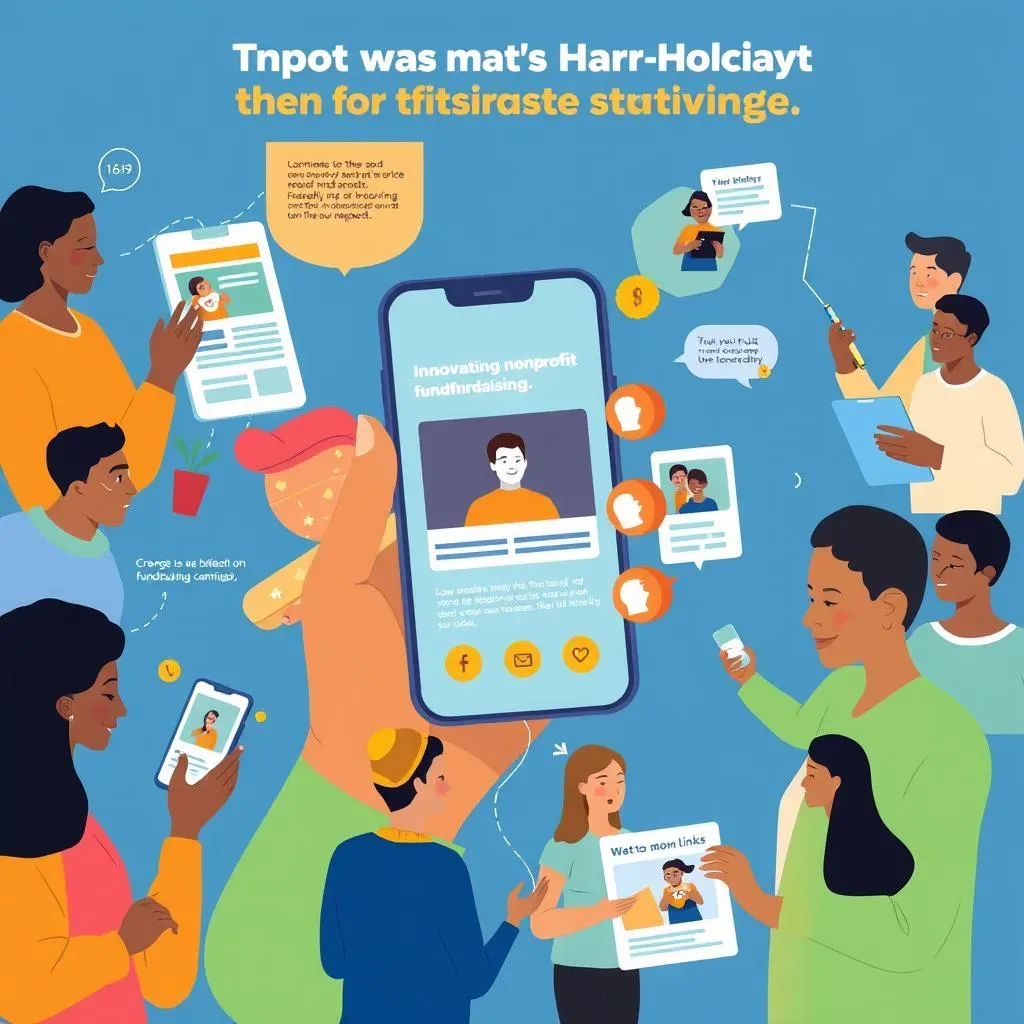Table of Contents
Are you ready to supercharge your nonprofit's fundraising efforts? This comprehensive guide dives into the essential "non-profit fundraising best practices" that will transform how you attract and retain donors. We'll explore the core strategies that successful nonprofits employ, from meticulous strategic planning to cutting-edge fundraising techniques. This isn't just about raising more money; it's about building lasting relationships with your supporters and maximizing your organization's impact. Get ready to learn how to effectively target your audience, leverage technology, and tell compelling stories that resonate deeply. We'll cover everything from creating a robust fundraising plan that aligns with your mission to implementing innovative methods that keep your campaigns fresh and engaging. By the end of this article, you'll possess a powerful toolkit of best practices to significantly boost your fundraising success and ensure your nonprofit thrives for years to come. So, let's embark on this journey together and discover the secrets to impactful fundraising!
Mastering Nonprofit Fundraising Best Practices

Mastering Nonprofit Fundraising Best Practices
Understanding the Fundamentals
So, you're diving into the world of nonprofit fundraising? Fantastic! It's a rewarding, albeit challenging, field. Think of it like building a magnificent castle – you need a strong foundation, and that foundation is built on understanding your organization's mission and identifying your target audience. What problem are you solving? Who are the people most affected by this problem, and how can you connect with them on an emotional level? This isn't about simply asking for money; it's about building a community of passionate supporters who believe in your cause.
Once you have a clear picture of your mission and audience, you need a well-defined strategy. This involves setting realistic fundraising goals, diversifying your fundraising streams (grants, individual donations, corporate sponsorships, events – check out our guide on best fundraising ideas), and creating a compelling narrative that showcases the impact of your work. Think of your fundraising strategy as your castle's blueprint – detailed, well-planned, and capable of withstanding any storm.
- Define your mission clearly.
- Identify your target audience.
- Set SMART (Specific, Measurable, Achievable, Relevant, Time-bound) goals.
- Diversify your fundraising streams.
Next, you need to build strong relationships with your donors. It's not just about getting a donation; it's about nurturing a long-term partnership. Regular communication, personalized thank-you notes, and transparent reporting on how donations are used are crucial. Think of your donors as the knights who protect your castle – they're your allies, and you need to treat them with respect and appreciation.
Finally, remember to evaluate and adapt your strategy regularly. What worked last year might not work this year. Track your progress, analyze your results, and adjust your approach as needed. This is an ongoing process of refinement and improvement, just like maintaining and upgrading your castle over time. Don't be afraid to experiment with new approaches, and always learn from your successes and failures.
Fundraising Stream | Pros | Cons |
|---|---|---|
Individual Donations | High engagement, personalized connection | Can be inconsistent |
Grants | Large sums of money | Competitive, requires extensive paperwork |
Corporate Sponsorships | Significant funding, brand awareness | Requires strong relationship building |
Strategic Planning for Effective Nonprofit Fundraising

Strategic Planning for Effective Nonprofit Fundraising
Setting SMART Goals and Objectives
So, you're ready to craft a fundraising strategy that actually works? Fantastic! But before you dive into specific campaigns, you need a solid roadmap. That's where SMART goals come in. Forget vague aspirations; we're talking Specific, Measurable, Achievable, Relevant, and Time-bound objectives. For example, instead of aiming to "raise more money," try "raise $50,000 in individual donations by December 31st through our online giving campaign and targeted email appeals." See the difference? It's precise, giving you a clear target to hit.
Once you've defined your SMART goals, break them down into smaller, manageable steps. This makes the whole process less daunting and allows you to track your progress effectively. Regularly reviewing these steps – maybe monthly or quarterly – keeps you focused and allows for necessary adjustments along the way. Think of it as building a strong castle, one brick at a time. Each brick represents a step towards your overall fundraising goal. You wouldn't try to build the entire castle at once, would you?
- Set Specific, Measurable, Achievable, Relevant, and Time-bound goals.
- Break down large goals into smaller, manageable steps.
- Regularly review progress and make adjustments.
Budgeting and Resource Allocation
Now, let's talk money – or rather, how you're going to *get* more of it. Creating a detailed budget is crucial. It's not just about tracking income; it's about understanding where your resources are going. Allocate funds for various fundraising activities (marketing materials, event costs, staffing, etc.) and track your spending closely. This helps ensure you're maximizing your return on investment (ROI) for each campaign. Think of your budget as the castle's treasury – you need to manage it wisely to ensure the castle's prosperity.
Consider incorporating a contingency plan into your budget. Unexpected expenses happen, so having a buffer helps avoid derailing your fundraising efforts. This could be as simple as setting aside a percentage of your projected income or identifying potential funding sources for emergencies. It's like having a secret passage in your castle – a backup plan in case of unforeseen circumstances. Always be prepared for the unexpected!
Expense Category | Budget Allocation | Actual Spending |
|---|---|---|
Marketing & Advertising | $5,000 | $4,800 |
Event Costs | $10,000 | $9,500 |
Staffing | $2,000 | $2,200 |
Developing a Multi-Channel Approach
Don't put all your eggs in one basket! A successful fundraising strategy utilizes a multi-channel approach. This means employing a variety of methods to reach a wider audience and diversify your income streams. Think about email marketing, social media campaigns, direct mail, peer-to-peer fundraising (check out our guide on peer-to-peer fundraising), and special events. Each channel offers unique opportunities to engage with different segments of your audience.
Remember to track the performance of each channel to see what's working and what's not. This data-driven approach allows you to optimize your strategy over time. It's like having multiple watchtowers around your castle – each providing a unique perspective and helping you defend against any threats. By diversifying your channels, you're less vulnerable to any single channel failing.
“The best way to predict the future is to create it.” – Abraham Lincoln. This quote highlights the importance of proactive planning. Your fundraising strategy isn't set in stone; it's a living document that evolves as your organization grows and your understanding of your donors deepens. Regularly reviewing and refining your strategy is critical for long-term success.
- Email marketing
- Social media campaigns
- Direct mail
- Peer-to-peer fundraising
- Special events
Innovative Techniques in Nonprofit Fundraising Best Practices

Innovative Techniques in Nonprofit Fundraising Best Practices
Harnessing the Power of Digital Storytelling
Let's face it, traditional fundraising methods are, well, a bit tired. People are bombarded with requests for donations daily. To cut through the noise, you need to tell captivating stories that resonate on an emotional level. Think high-quality videos featuring real beneficiaries, interactive online experiences that allow donors to directly engage with your cause, and compelling social media campaigns that showcase the positive impact of your work. Forget dry reports; we're talking emotionally engaging content that makes people *feel* the difference their donation can make.
Consider using platforms like Instagram and TikTok to reach younger audiences. These platforms are all about short, impactful videos and engaging visuals. You can share quick updates on your projects, introduce your team, and highlight success stories. Remember, your storytelling needs to be authentic and transparent. People can spot inauthenticity a mile away. Check out our blog post on effective storytelling for more tips and examples.
- Create high-quality videos featuring beneficiaries.
- Develop interactive online experiences.
- Use social media for engaging campaigns.
- Prioritize authenticity and transparency.
Exploring Peer-to-Peer Fundraising and Crowdfunding
Think outside the box! Peer-to-peer fundraising is a game-changer. Instead of solely relying on your organization to solicit donations, empower your supporters to become fundraising ambassadors. They can create their own personal fundraising pages, share your cause with their networks, and encourage their friends and family to donate. It’s like having an army of mini-fundraisers working tirelessly for you! This expands your reach exponentially and fosters a stronger sense of community around your cause.
Crowdfunding platforms offer another avenue for reaching a broader audience. These platforms provide the tools and infrastructure for launching successful campaigns, allowing you to tap into a vast pool of potential donors. Whether it's Kickstarter, GoFundMe, or a specialized platform for nonprofits, crowdfunding can be a powerful tool for raising awareness and generating significant funds. Just remember to create a compelling campaign pitch that clearly articulates your mission and the impact of your work. For more ideas, check out our guide on successful crowdfunding campaigns.
Fundraising Method | Pros | Cons |
|---|---|---|
Peer-to-Peer | Expanded reach, increased engagement | Requires strong supporter network |
Crowdfunding | Access to large audience, quick fundraising | Competitive landscape, platform fees |
